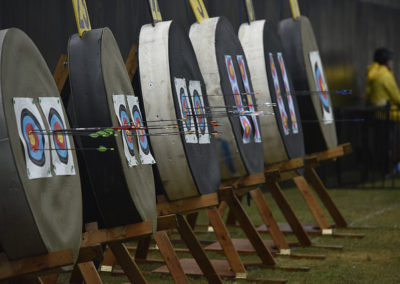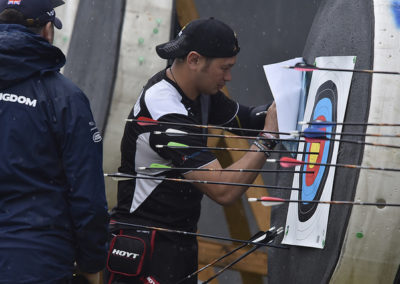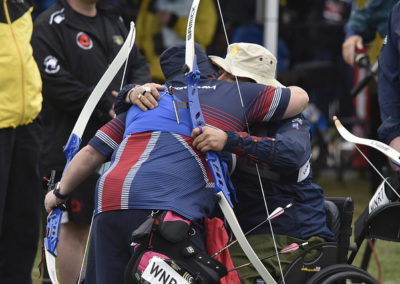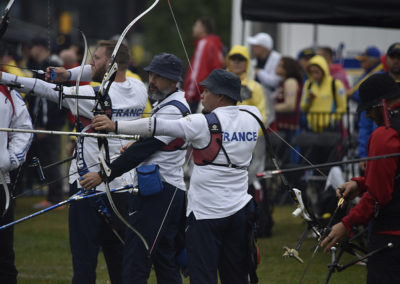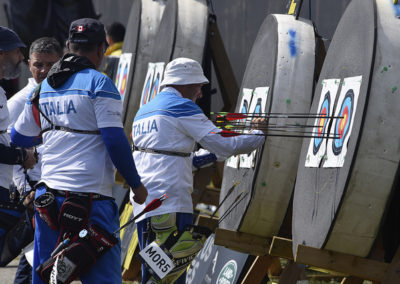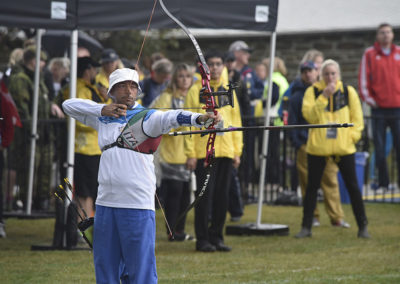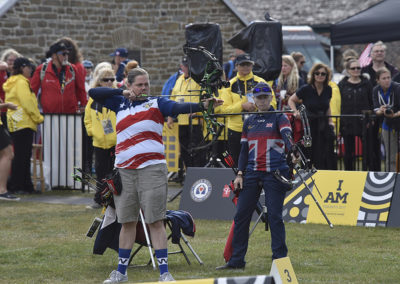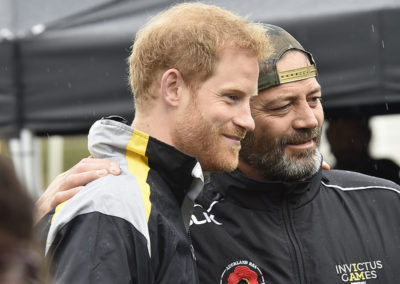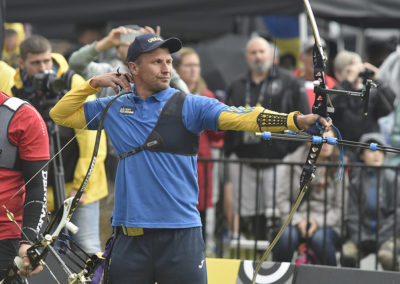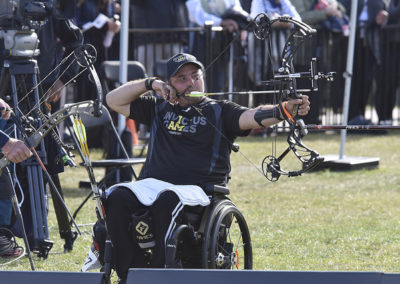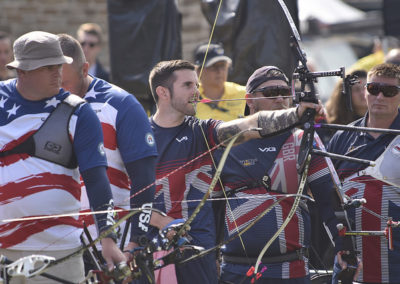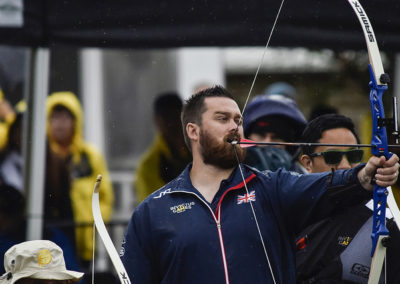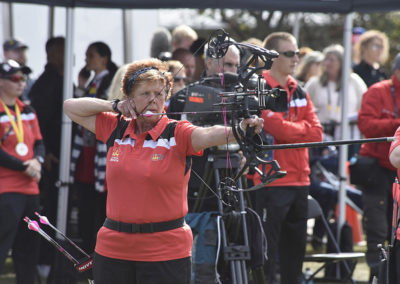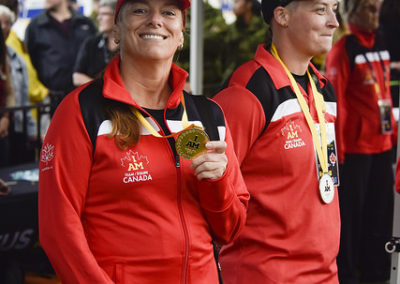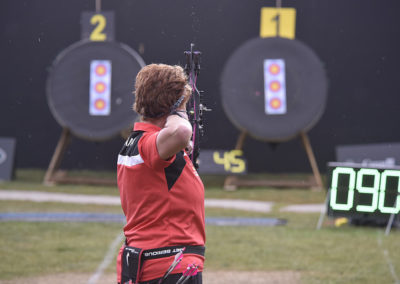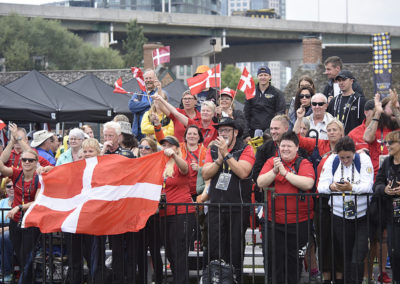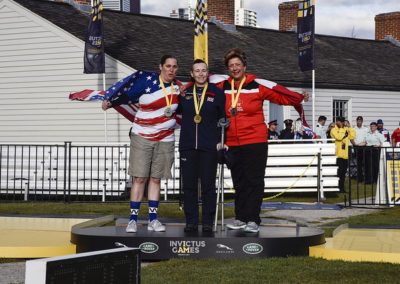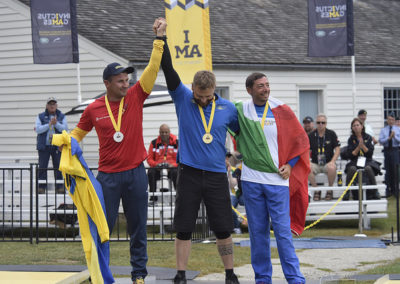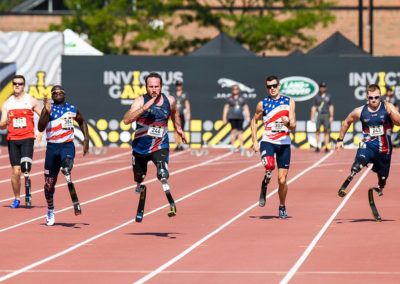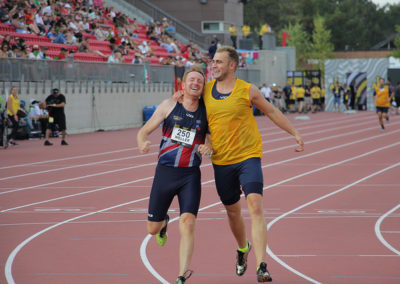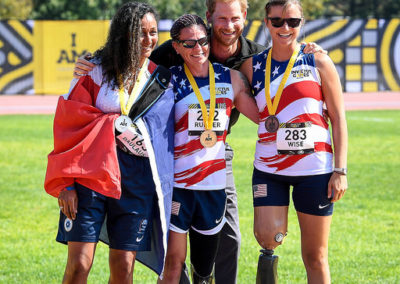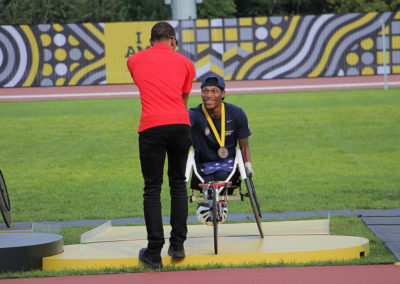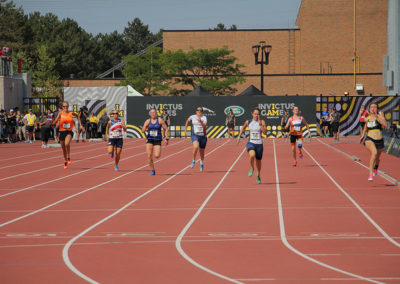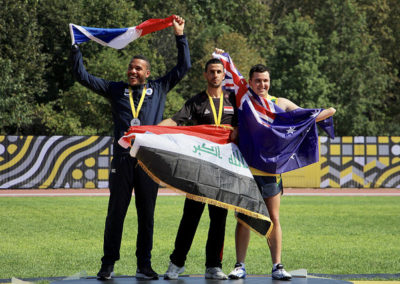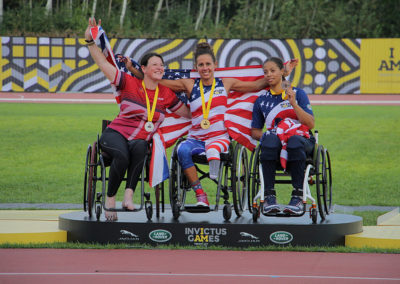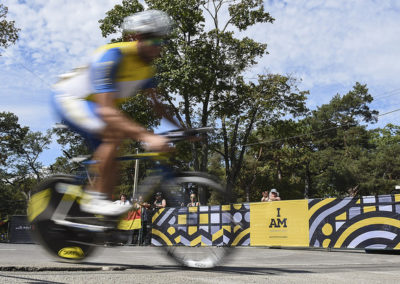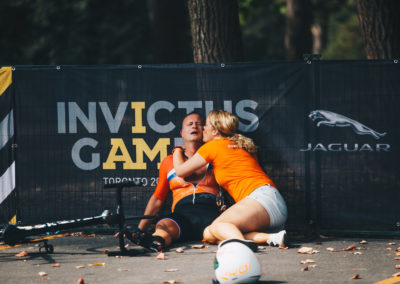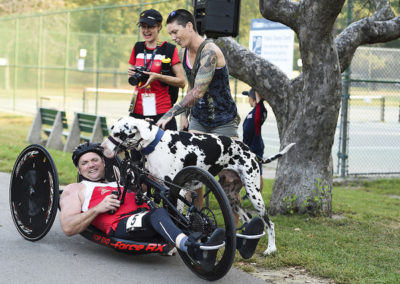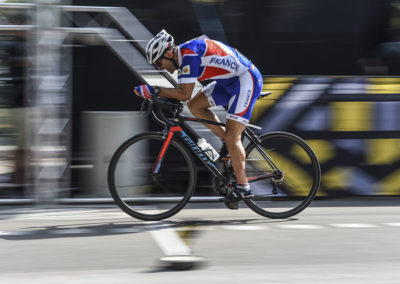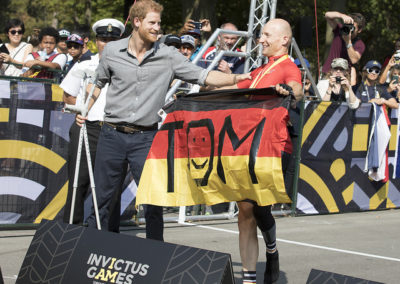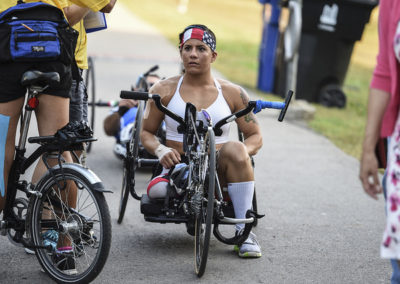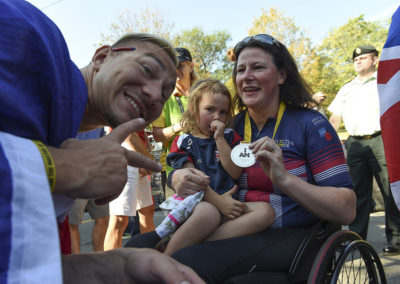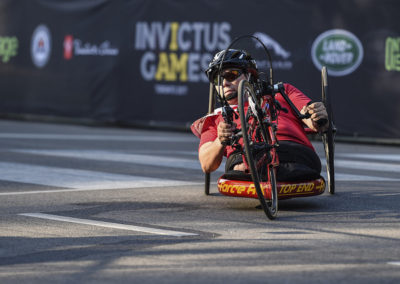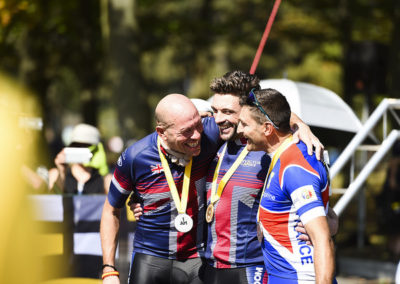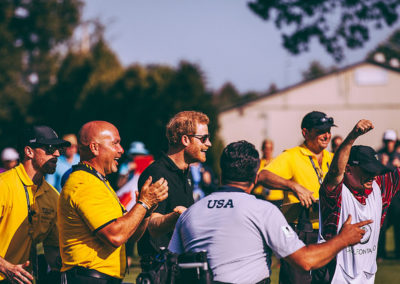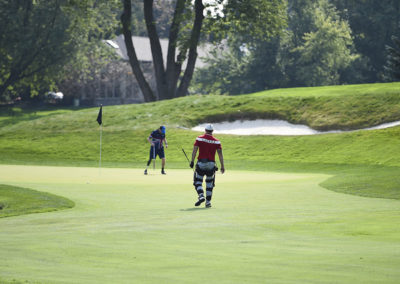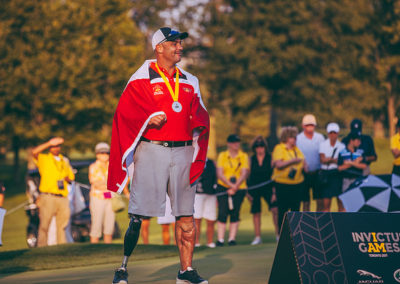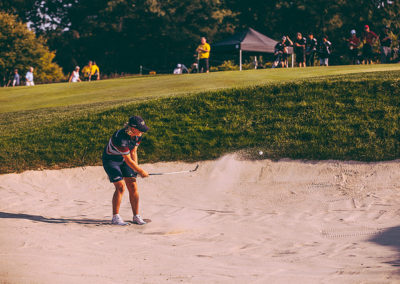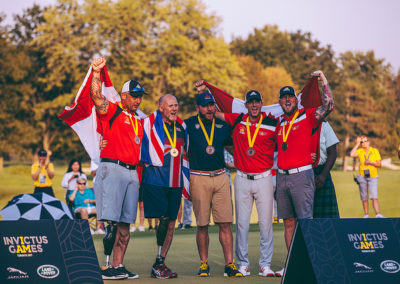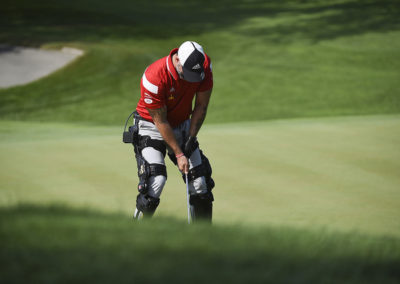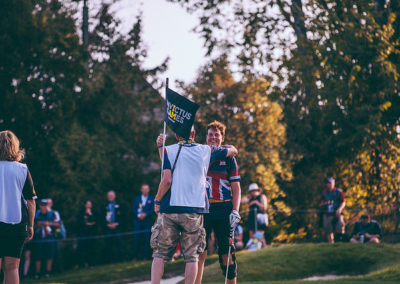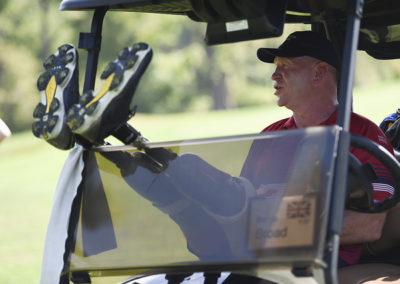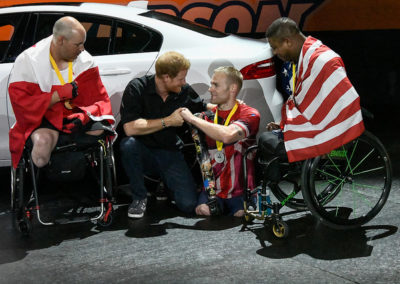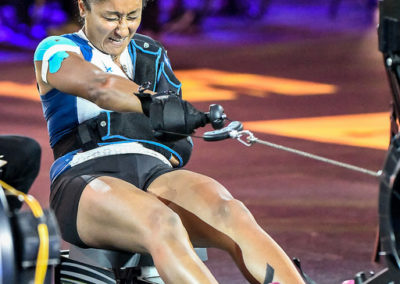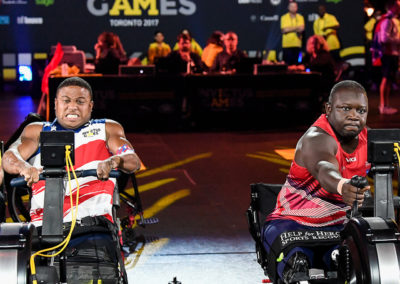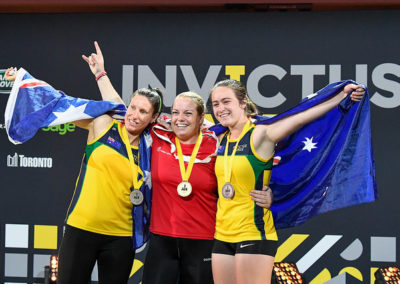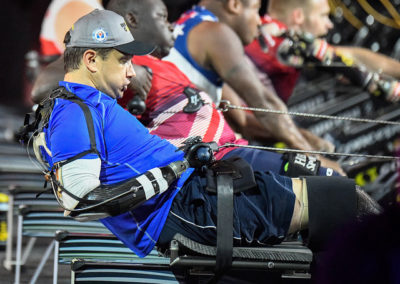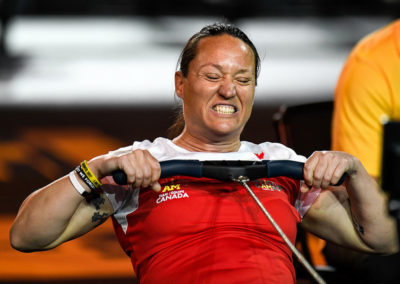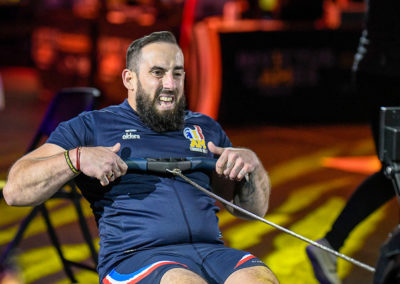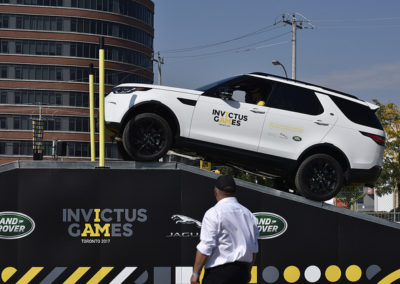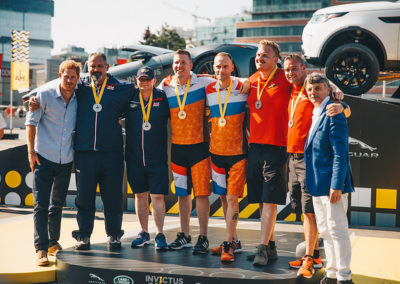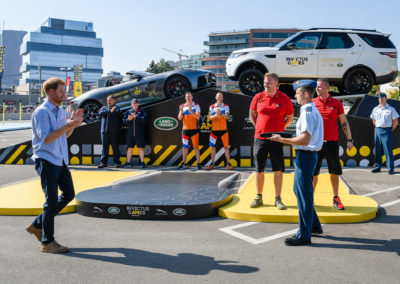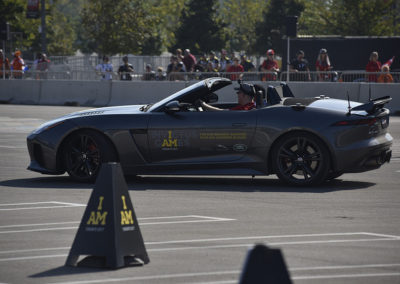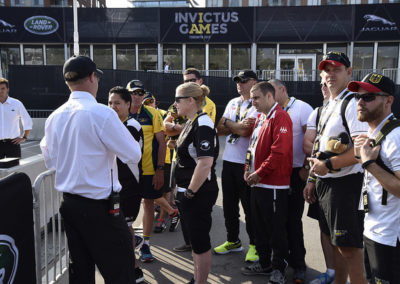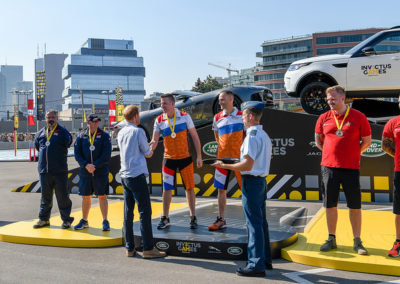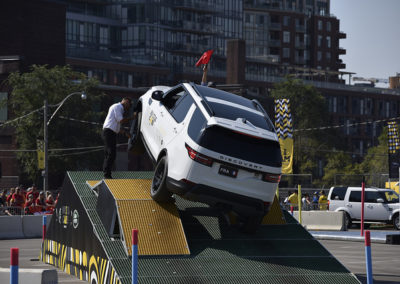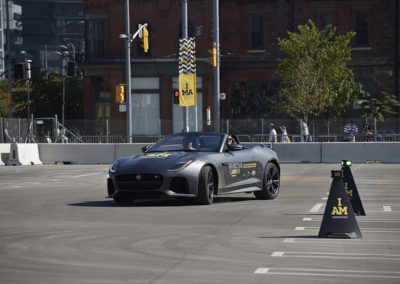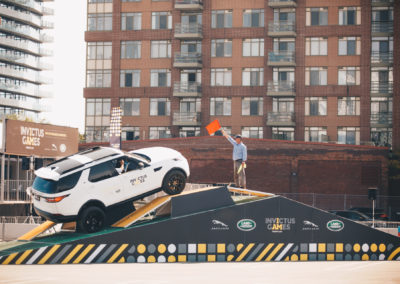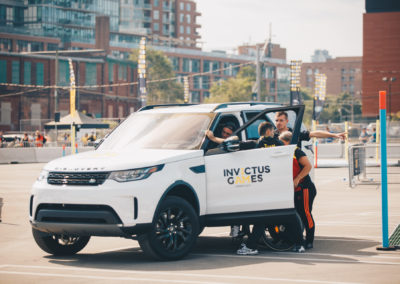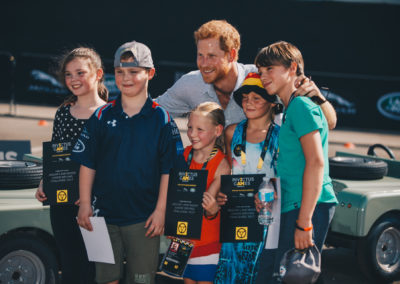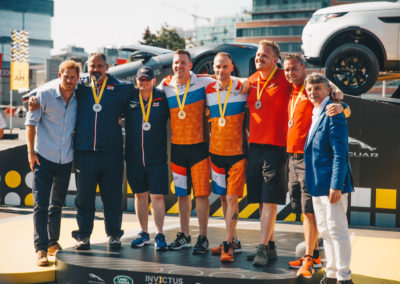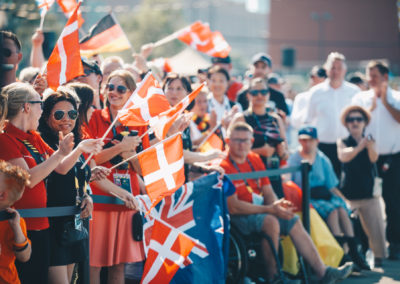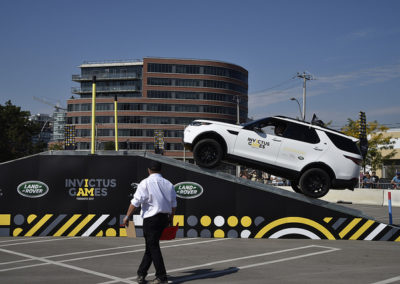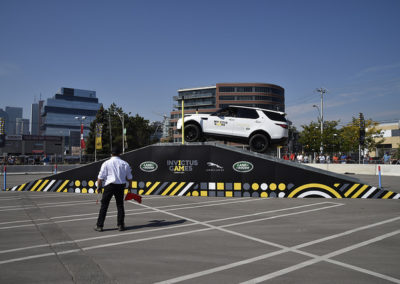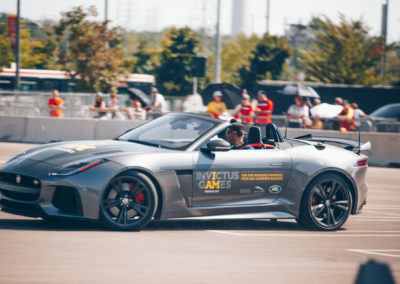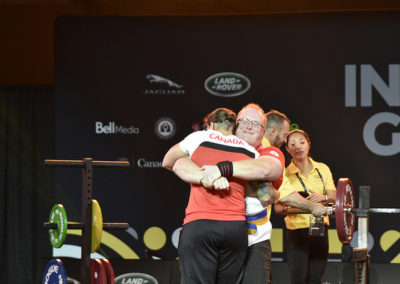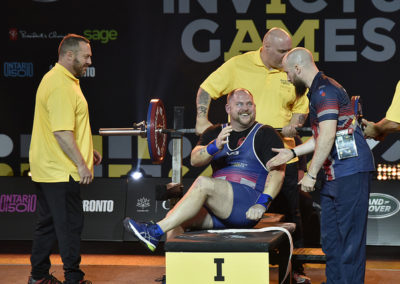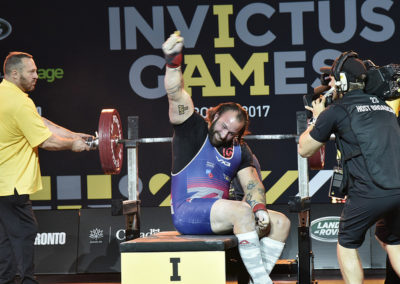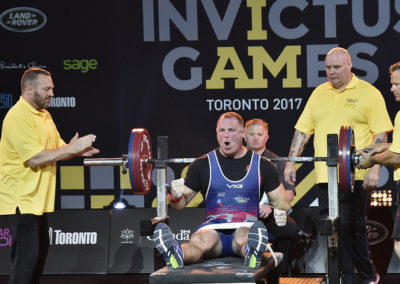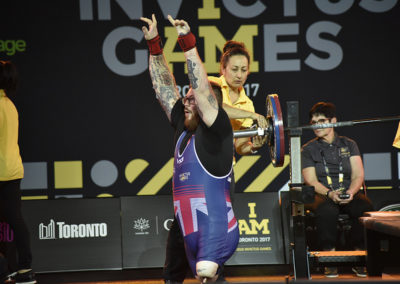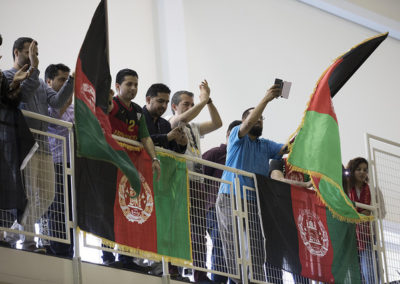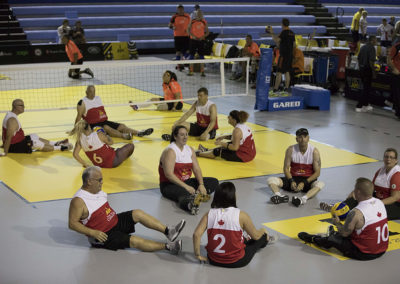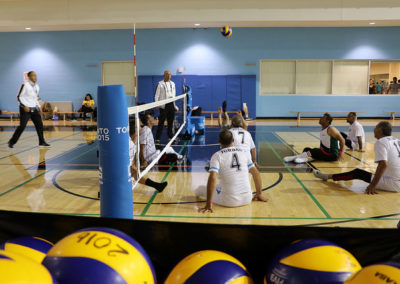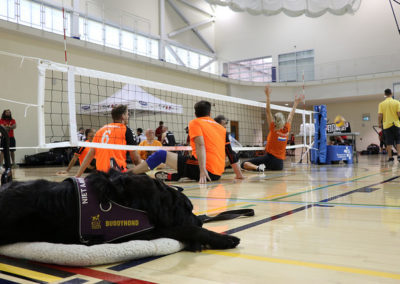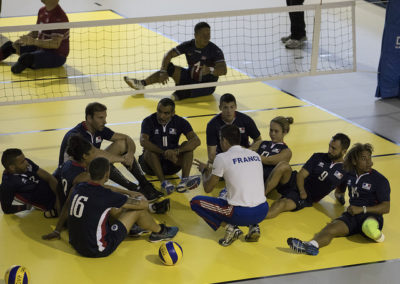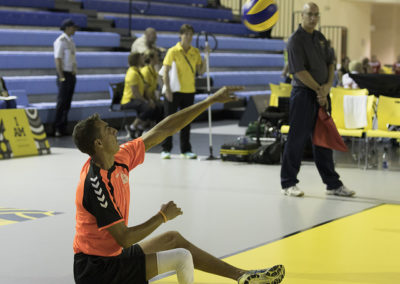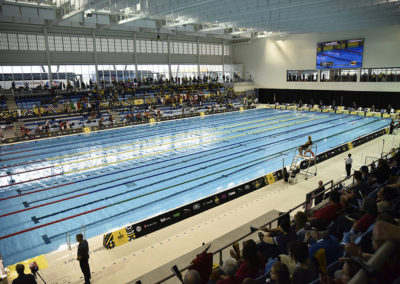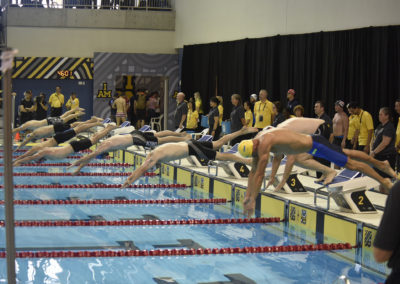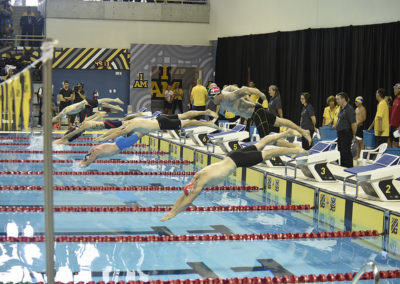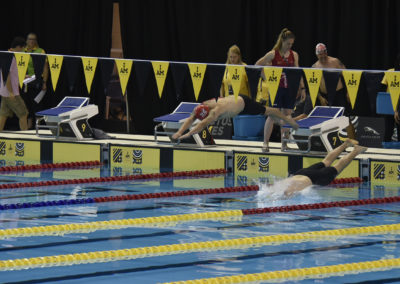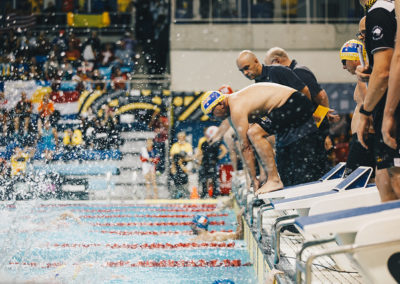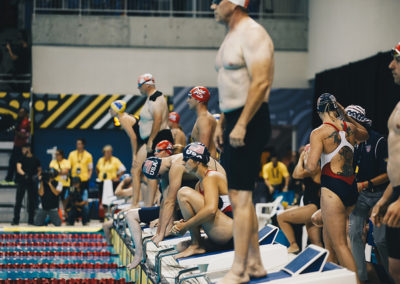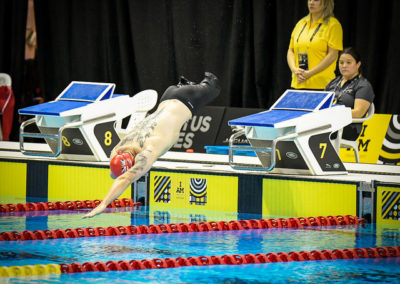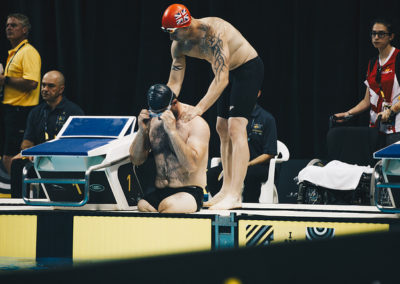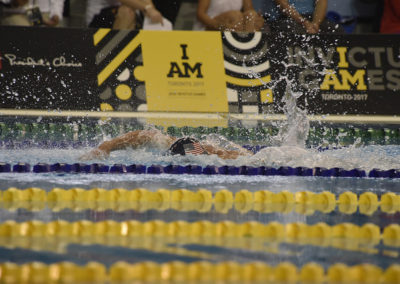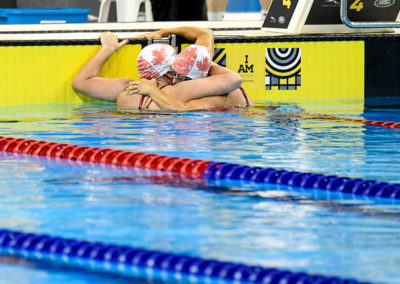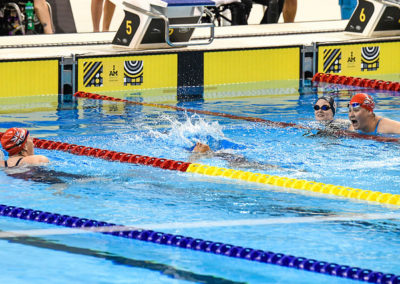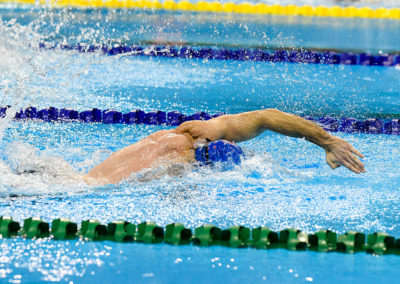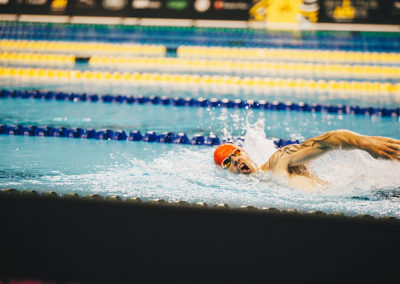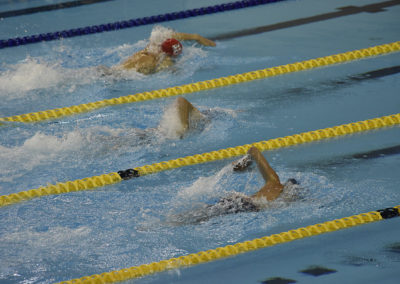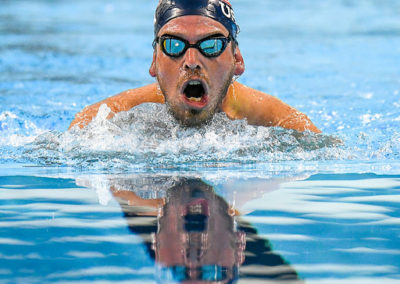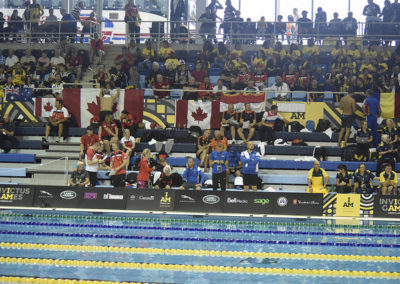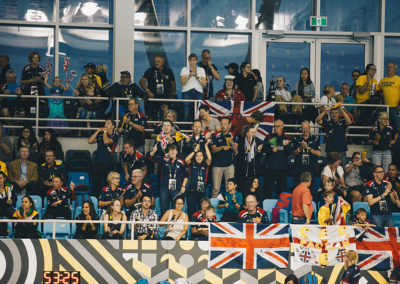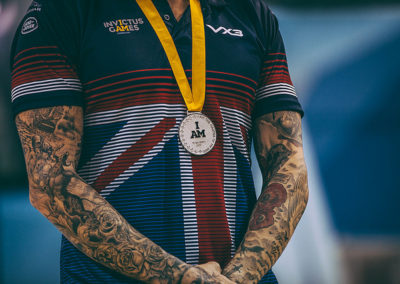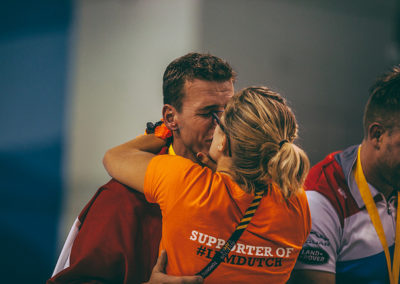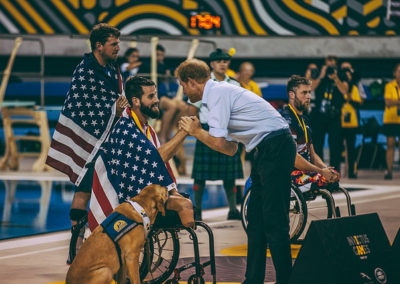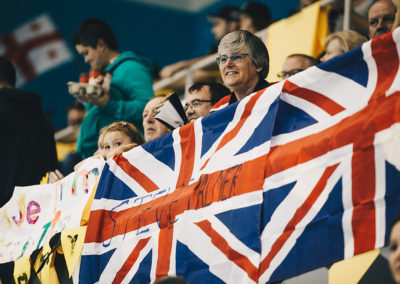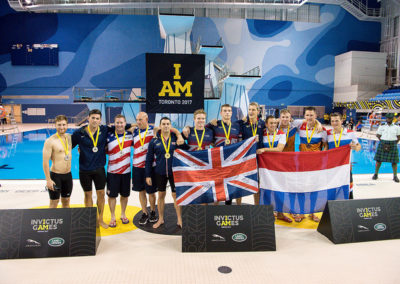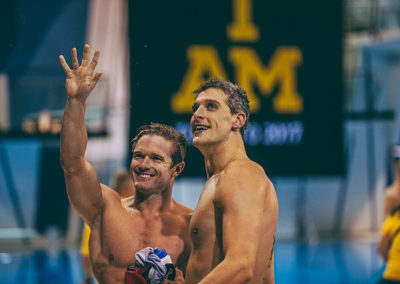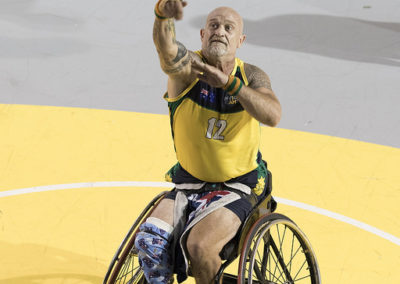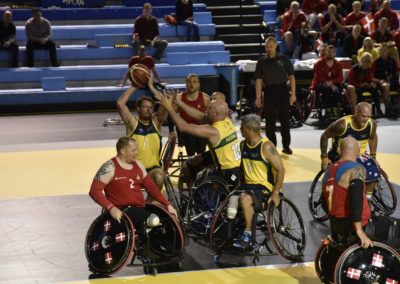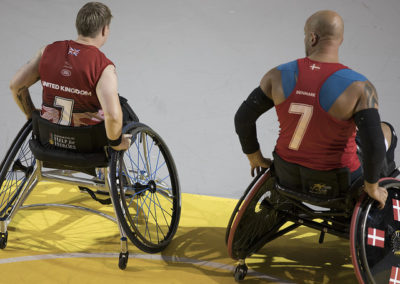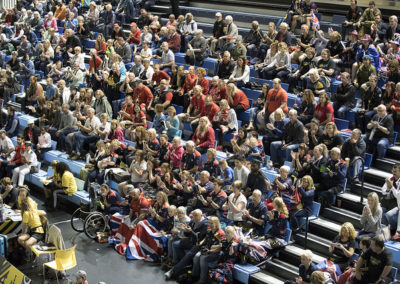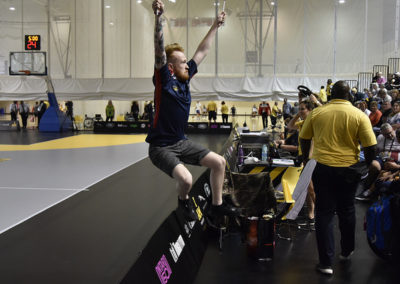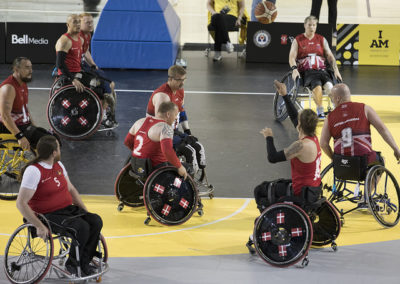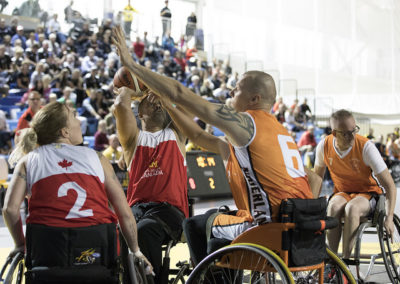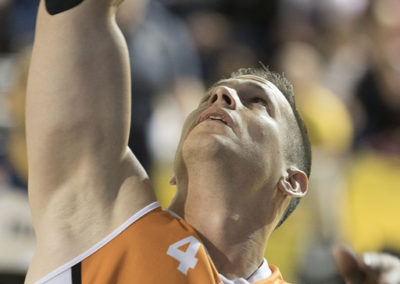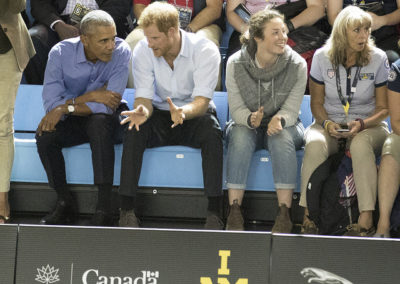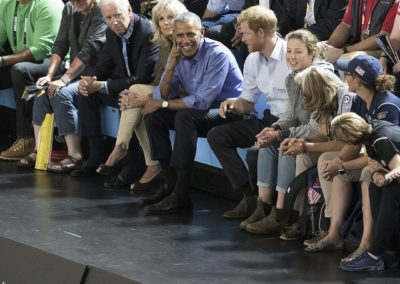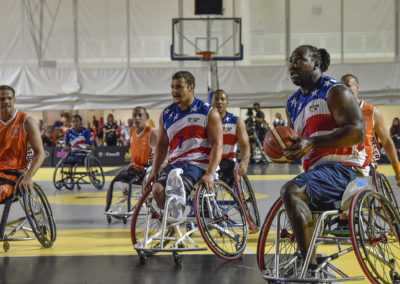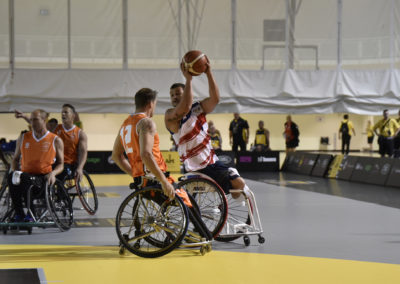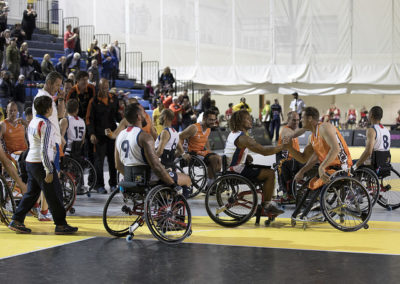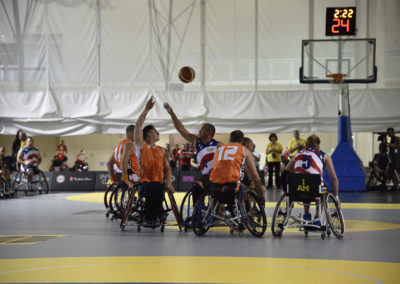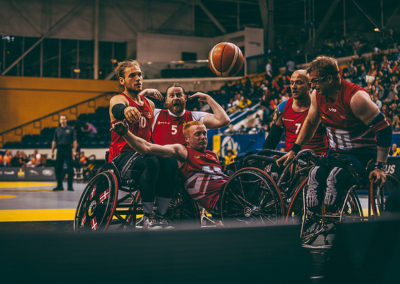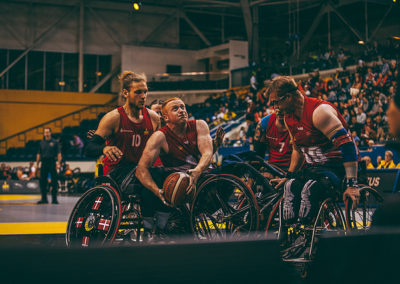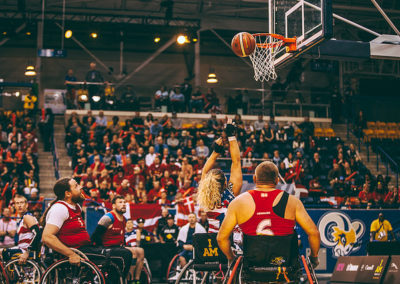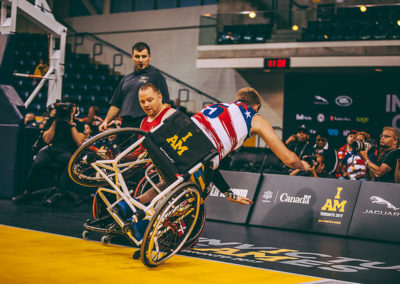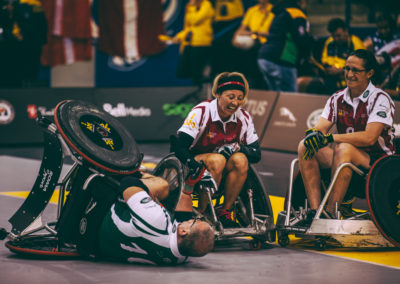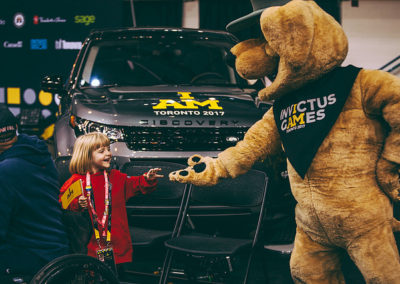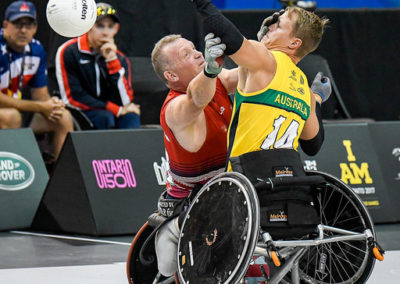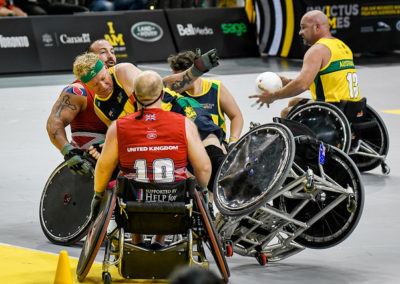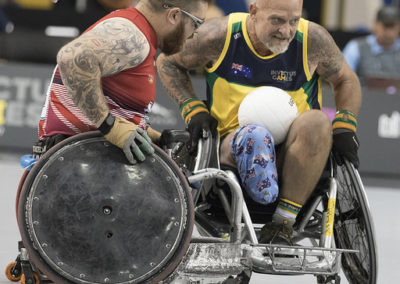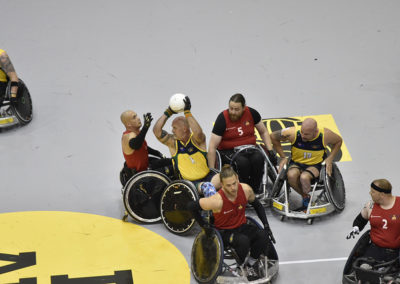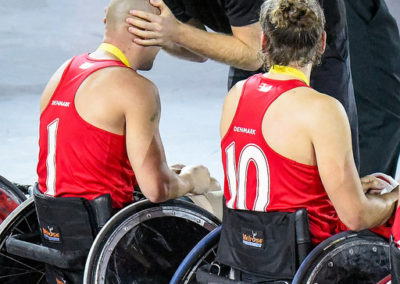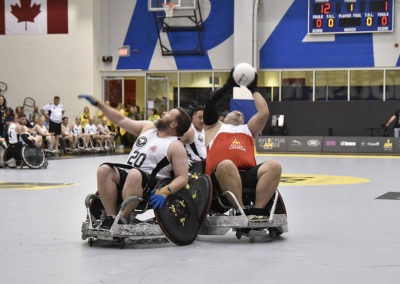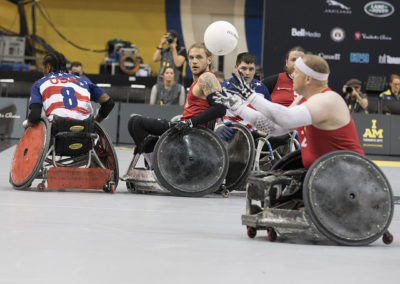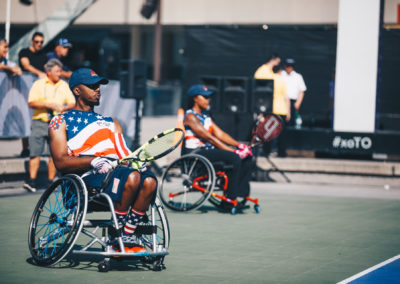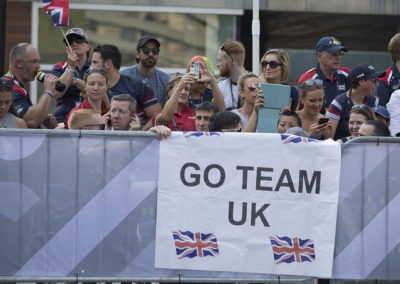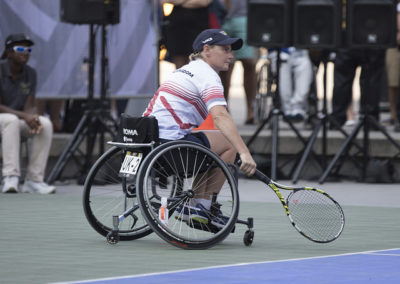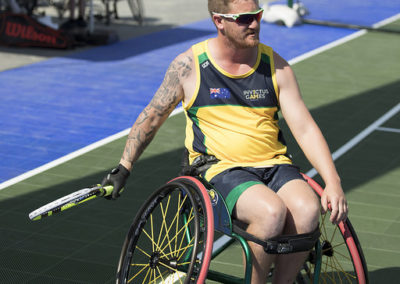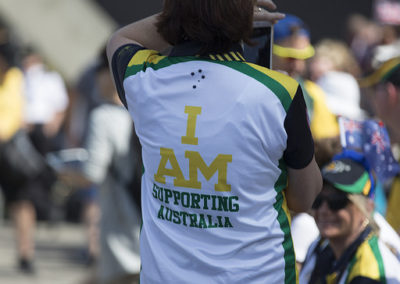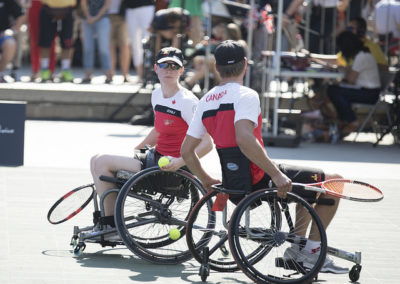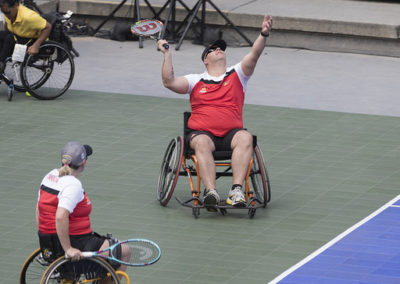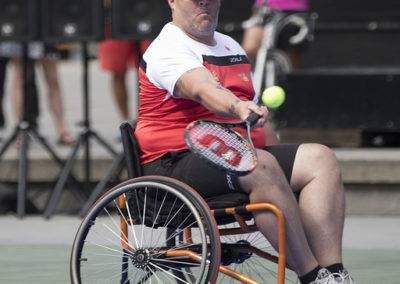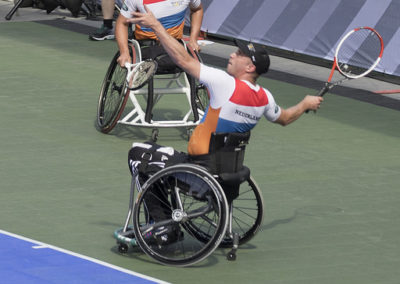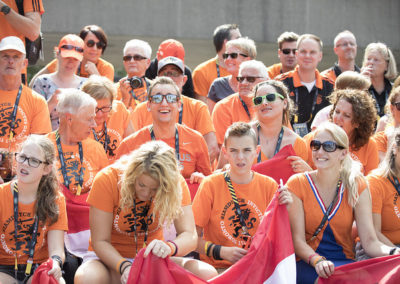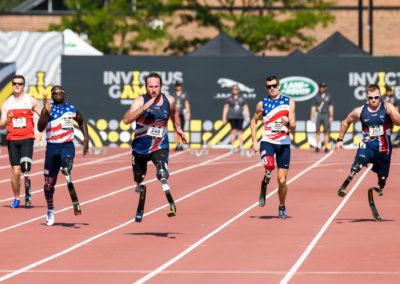Adaptive sport (or parasport): Competitive sport for individuals with disabilities. Adaptive sport is often incorporated into the rehabilitation program of ill, wounded or injured persons. Adaptive sport competitions like the Invictus Games help currently serving members as well as veterans in overcoming their physical or mental health illness or injury. Through adaptive sport, these men and women…
Develop a sense of belonging
Show increased self-esteem.
Create an outlet for excess energy.
Foster a sense of camaraderie with other wounded service members.
Experience an improved quality of life.

Archery
Archery involves using a bow to propel arrows at a target from a set distance. This sport is fully integrated, meaning it is played among able-bodied competitors as well as competitors with varying physical disabilities, such as a spinal cord injury or amputation. Competitors can shoot from a standing or sitting position while aiming towards the centre of a target. Archery is a test of accuracy, strength and concentration.
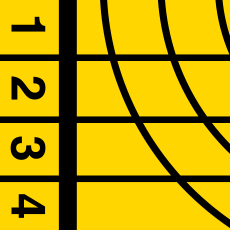
Athletics
Athletics consists of track and throwing events. Competitors compete in each event against others with similar levels of ability, according to their functional classification. This includes competitors competing in wheelchairs, with prostheses, or under the guidance of a sighted person known as a guide. This array of athletic events are played by individual and team relay competitors.
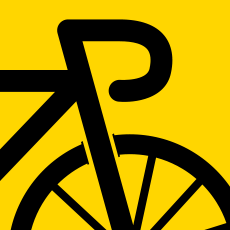
Cycling
Bicycles, tandems, recumbents, and handcycles can be used in road cycling events. In the Criterium event, cyclists begin en masse and complete several laps of a designed circuit course over a set time period. First across the finish line wins. In the Time Trial event, athletes start individually at set intervals. It’s a race against the clock; the fastest time over the set distance wins.

Golf
The objective of this individual sport is for the competitor to place their own golf ball into the hole at the opposite end of the fairway. In order to be successful, the competitor will use a set of golf clubs to place the ball in the hole with as few strokes as possible. Eighteen holes are played and the competitor with the lowest score wins. Adaptive golf incorporates varying modifications, such as modified equipment for competitors with physical or cognitive disabilities.
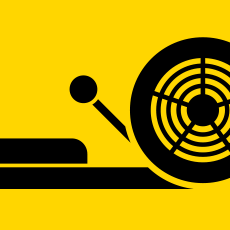
Indoor Rowing
Indoor rowing takes place on an indoor machine simulator mimicking the actions of watercraft rowing. This sport focuses on speed, power, endurance and synchronization. Indoor rowing can be modified to meet the needs of competitors with varying disabilities, making it an integrated sport.
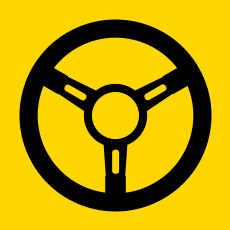
Jaguar Land Rover Driving Challenge
The Jaguar Land Rover Driving Challenge is a test of skill and precision where two participants from each nation will be required to display the best teamwork, cohesion and communication to take home the gold medal. Taking on a Jaguar and a Land Rover challenge, the courses are designed for nations to work as a team while taking the vehicles through precision gates. Though teams are timed, accurate driving will produce better results than speed alone.

Powerlifting
Powerlifting is a strength competition that sees competitors assume the bench press position lying on bench with head and body (including buttocks) touching the bench and lowering the bar to their chest. Once the bar is motionless, competitors must press upwards until their arms are straight and hold the bar still until the referee gives the signal. Competitors are given three tries for each lift. Lifters compete by weight class.

Sitting Volleyball
This sport is played among two teams with competitors of varying disabilities. Similar to traditional volleyball, competitors hit the ball over the net with the objective of landing it in the opposing team’s half of the court. The rally begins with a serve from the back of the court, over the net, and into the receiving team’s court. Points are awarded to the team that wins the rally. For play to continue, competitors must make contact with the volleyball while sitting on the floor with one buttock on the ground.
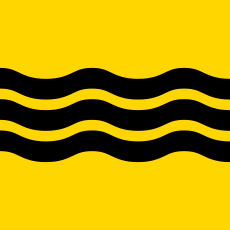
Swimming
Both an individual and team sport, swimming is one of the most well-known sports internationally, with events in freestyle, backstroke and breaststroke. Swimming is a timed competition where the first competitor or team in relay style to touch the timing pad at the end of the last lap wins. Competitors of varying physical abilities participate in this sport. Swimming is one of the longest-standing sports for competitors with disabilities.
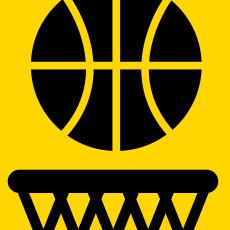
Wheelchair basketball
Wheelchair basketball is a competitive sport played between two teams with players using wheelchairs to move around the court. This sport is similar to the stand up version with a few exceptions- the competitors must throw or bounce the ball after every two pushes of the wheels on the chair, otherwise they will be penalized for travelling. The size of the court and the height of the net is the same as in able-bodied basketball. The objective is to throw the ball into the opponent’s hoop. The team with the most points by the end of the game wins.
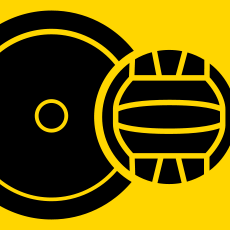
Wheelchair rugby
Any sport originally coined “murderball” has excitement written all over it. Wheelchair rugby is a team sport played indoors on a hardwood court. Competitors play in wheelchairs, and their objective is to score the most goals by carrying, dribbling, or passing the ball toward the opponent’s end. Contact between wheelchairs is allowed and players frequently collide as they attempt to stop their opponents and take control of the ball. Players gain points by touching the goal line with two wheels while in possession of the ball. The team with the most points wins the game.
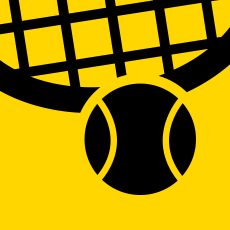
Wheelchair tennis
Wheelchair tennis is a challenging sport very similar to tennis, except competitors use a wheelchair to travel around the court. At the Invictus Games, wheelchair tennis is played in doubles format. The court and rules of wheelchair tennis remain the same as the stand up version, however, players may allow the ball to bounce twice on their side of the net before returning it to their opponents’ side.
Funding Parties




